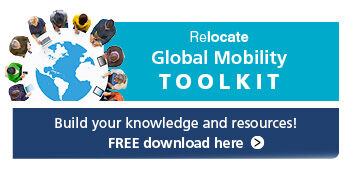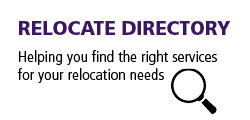Does HR analytics have a role in Brexit preparations?
What is HR analytics? How can we use it to prepare workforces for Brexit? Edward Houghton, CIPD research adviser on human capital and metrics, surveyed the scene at the IRN Brexit HR event.

What is HR data analytics?
“The question is, what do data analytics and insights offer us as HR?” he continued, explaining there is currently “little clarity around what we mean when we say ‘HR analytics.’” Only now has some consensus been reached on a comprehensive definition of workforce analytics, suggested Mr Houghton, who has conducted extensive literature reviews for the CIPD's on research into the area, which spans three studies on the subject.The audience’s take on HR analytics displayed a range of complementary opinions. Some delegates reported it is about picking up on trends, others used it to identify danger zones and risk areas, others still for a combination of this and more, including how to help companies understand their workforce and employees' needs better.Suggesting a definitive explanation of HR analytics, Mr Houghton quoted HR analytics is "a number of processes, enabled by technology, that use descriptive, visual and statistical methods to interpret people data and HR processes. These analytical processes are related to key ideas such as human capital, HR systems and processes, organisational performance, and also consider external benchmarking data” (Marler and Boudreau 2017).Read more from the IRN's Brexit HR series:
- Timing perfect for first HR forum in IRN Brexit series
- How can HR have a voice in the Brexit negotiations?
- Recruiting, retaining and rewarding a post-Brexit workforce
- The head, heart and brain of Brexit: HR's role in managing uncertainty
- Brexit?: See the bigger picture...
Delivering actionable insights from sound HR evidence
Mr Houghton advised delegates taking the first steps in harnessing data and HR analytics to identify and overcome workforce and skills risks to be aware of the quality of data.“Quality is all, yet all data will have errors in it,” he noted. “Try not to chase perfect data – good quality is good enough.” Here, members of the audience shared their experiences. One noted how data entry is regarded as a routine rather than a strategic task, so it is easy to underestimate the importance of the role. Yet, going to the teams who input and capture data can yield valuable insights where they are more involved in the process.Expanding on this, Mr Houghton explained how sound, critically appraised evidence that is garnered from multiple sources increases the likelihood of favourable outcomes. These sources can include:- scientific research outcomes
- organisational data and analytics
- professional judgement and experience
- stakeholders’ values and concerns.
Where does HR gets its evidence from?
Across the spread of diverse insight sources needed for good-quality outcomes, the least used among the 629 HR practitioners surveyed for the CIPD's Winter Outlook 2017 were scientific research, management literature and external experts' views.Overall, the data suggests that personal insight is most favoured among HR professionals, with 19% "always" or 58% "sometimes" using personal experience as evidence (77% combined).In comparison, 21% of respondents "always" or 48% "sometimes" use "data, facts and figures I or my colleagues have gathered from my organisation" as evidence (69%).The judgement of experienced colleagues internally also ranked highly, with 15% always seeking this and 56% "often" doing so (71% combined).Room for HR to improve?
Yet, at the organisation level, findings from the CIPD HR Winter Outlook 2015 suggest HR leaders are far more confident than leaders generally that their current people strategy "will help achieve the company's future priorities" (72% of HR leaders compared to 26% of non-HR leaders). This suggests HR needs more buy-in from the wider business. There also seems to be a significant perception gap between how HR and non-HR stakeholders report satisfaction with HR analytics. HR reports 37% of non-HR stakeholders are satisfied with HR analytics. Yet for non-HR stakeholders on the same question, just 14% report they are satisfied, suggesting HR practitioners could over-estimate company satisfaction with HR analytics. Similarly for dissatisfaction, HR reports this as 27%, with non-HR reporting it as 34%. Interestingly, over half of non-HR leaders (53%) report having no opinion on how satisfied with the analytics HR provides. These insights suggest an opportunity for HR to draw on wider sources of evidence, add more value to the business through offering more quality insights and upskilling, and ultimately build capability.In terms of how to deliver this, Mr Houghton cited the 2014 London Councils Workforce audit. This showed how limited line manager and HR skills in this area, a lack of time and resources, and inertia are often seen as the biggest barriers to greater adoption of workforce planning. Mr Houghton encouraged delegates to seek guidance from the CIPD, the professional body for HR and people development’s, HR analytics hub. This offers information on how to audit data, collect insights, for example through engagement surveys, and report findings to colleagues.Assessing the Brexit effect
Moving the presentation on to how HR can more effectively use data to analyse workforce needs and plan in the context of Brexit, Mr Houghton proposed three key areas of action:- risk analysis
- recruitment proposition
- Brexit management capacity.
- Developing scenarios: versions of the future, including the impact on the business, future business requirements and changes in the operating environment
- Forecasting demand-side: for each of the developing scenarios, what are the worforce demands, the skills and knowledge focus and the strategy requirements, eg diversity and inclusion (D&I)?
- Forecasting supply-side: for each of the developing scenarios, how does this fit with your understanding of the labour market drawn from different sources and your skills and knowledge focus?
- Mapping gaps: highlight the key barriers to overcome and develop strategies for overcoming the challenges.
HR analytics good practice
Rounding out what was a comprehensive and practical session, Mr Houghton offered his recommendations for workforce planning using people data in the Brexit environment that will be valid (ie the measure reflects what is being measured), comprehensive and coherent.- Invest in high-quality benchmarking studies, which follow robust academic methods, eg evidence.
- Develop scenarios based on engagement with all relevant team managers. Seek experts with deep organisational knowledge.
- Illustrate connection to the business and people strategy by tying objectives of the workforce plan into business objectives.
- Focus on quality of data and address up front.
Look out for more Brexit planning news and features in the upcoming Autumn 2017 issue of Relocate Global magazine. Reserve your copy here.
Access hundreds of global services and suppliers in our Online Directory Get access to our free Global Mobility Toolkit
Get access to our free Global Mobility Toolkit 
©2025 Re:locate magazine, published by Profile Locations, Spray Hill, Hastings Road, Lamberhurst, Kent TN3 8JB. All rights reserved. This publication (or any part thereof) may not be reproduced in any form without the prior written permission of Profile Locations. Profile Locations accepts no liability for the accuracy of the contents or any opinions expressed herein.









































